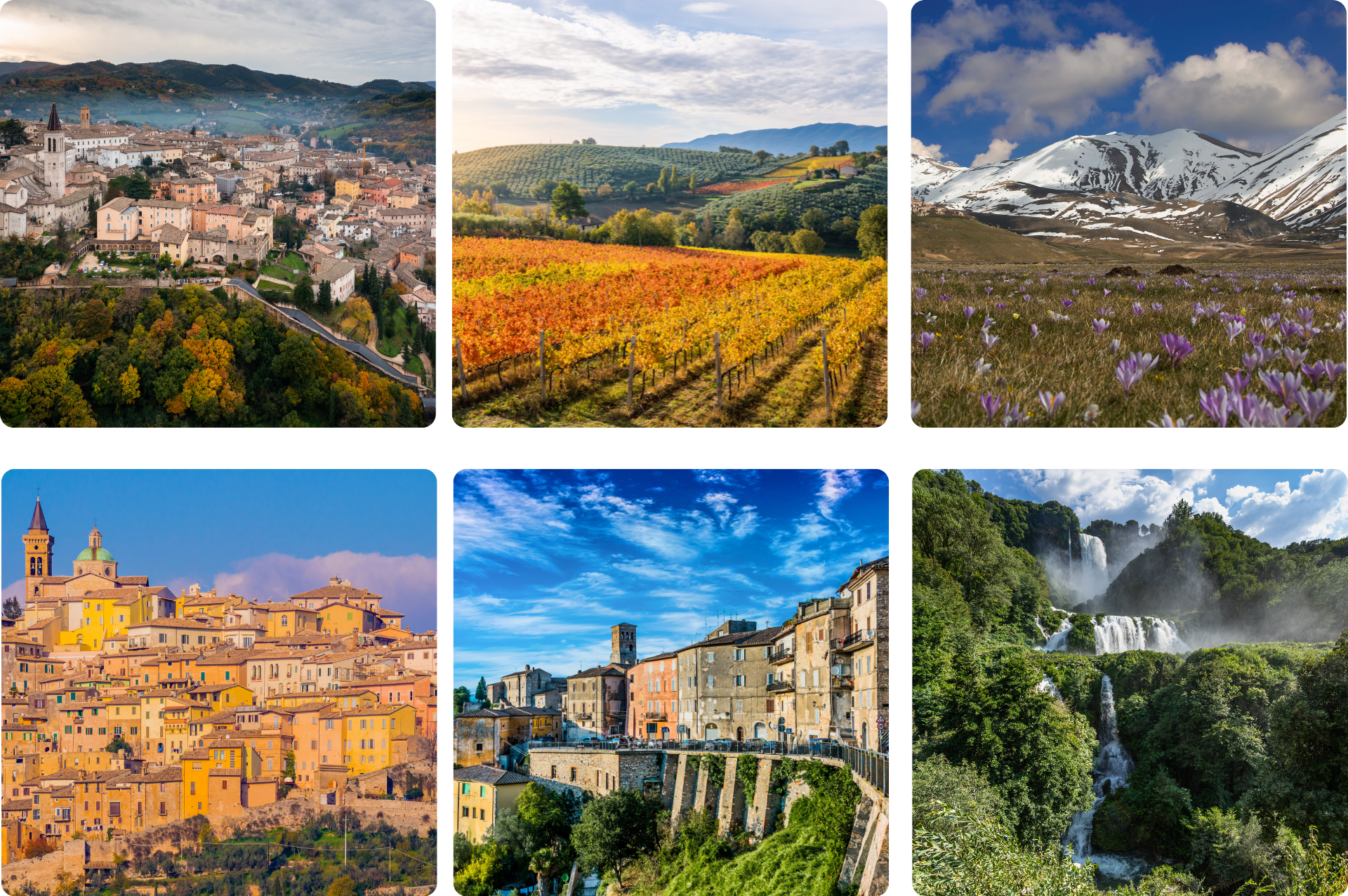Umbria

Thousand-year history: from prehistoric origins to modernity
Umbria, known as the "ancestor of the Italic people", boasts a history that has its roots in the Stone Age. The discovery of prehistoric tools testifies to human presence since the Paleolithic, with important archaeological sites that tell of a rich and varied past. The region was the scene of important developments during the Iron Age, with the presence of the Umbrians and the Etruscans, two populations of Indo-European origin who profoundly influenced local history. Ancient Umbria, divided between these two peoples, still shows traces of an ancient division, evidenced by the Eugubine Tablets and other important finds. The Roman conquest of the 3rd century BC led to the integration of the region into the Empire, with the foundation of colonies and the construction of infrastructures such as the Via Flaminia. After the fall of the Roman Empire, Umbria went through periods of barbarian domination, before being divided between the Lombards and the Byzantines. The Middle Ages were an era of great changes, with the formation of municipalities and lordships that characterized the political and social fabric of the region until the modern era. 
Cultural and artistic heritage: monuments and museums
Umbria is rich in sites of historical and artistic interest. Perugia, the capital, and Assisi, with the Basilica of San Francesco, are just some of the places that attract visitors from all over the world. Monuments such as the Cathedral of Orvieto, the Palazzo dei Consoli in Gubbio, and the Festival dei Due Mondi in Spoleto represent moments of high cultural and artistic expression. Museums such as the National Museum of Umbria and the National Gallery of Umbria house works of inestimable value, making the region a true treasure chest of art. 
Traditional cuisine: a food and wine journey
Umbrian cuisine, influenced by the Etruscan and Roman civilizations, makes olive oil, legumes and cereals the pillars of its culinary tradition. The Middle Ages saw the establishment of monasteries and religious orders that influenced local cuisine, with Saint Francis and Saint Clare among the saints who left an indelible mark. The pork butchery tradition, with its hams and cured meats, represents one of the regional excellences, together with dishes based on black truffles, a symbol of Umbrian cuisine. The lakes and rivers offer prized fish, while the production of cheeses and the cultivation of legumes such as Castelluccio lentils testify to the richness and variety of Umbria's food and wine offering.
DOP, IGP and Slow Food presidia products: Umbrian excellence
Umbria boasts a series of agri-food products recognized nationally and internationally for their quality and uniqueness. From black truffles to cured meats, from extra virgin olive oil to cheeses, each product is an expression of a rich and generous territory. The PDO and PGI denominations, together with the Slow Food Presidia, guarantee the protection of these excellences, promoting a food culture that respects tradition and the environment. 

Events and traditions: the Umbrian calendar
Umbria comes alive annually with traditional events and festivals that celebrate its culture and traditions. From the Festa dei Ceri in Gubbio to the Corsa dei Ceri, from the Cantamaggio Ternano to the Infiorate in Spello, each event is an opportunity to discover the authentic soul of the region. The Corpus Domini Festival in Orvieto and the Giostra della Quintana in Foligno are examples of how Umbria knows how to combine history, faith and entertainment in unique events.
Demography and geography: a look at the data
With a population of approximately 880,000 inhabitants and a surface area of 8,456 square kilometers, Umbria is characterized by a predominantly mountainous and hilly territory, with no outlets to the sea. The region is crossed by important rivers such as the Tiber and is home to mountains such as Monte Vettore, as well as Lake Trasimeno, the largest lake in central Italy. The two provinces, Perugia and Terni, make up the administrative fabric of the region, which stands out for its natural and landscape richness. 
